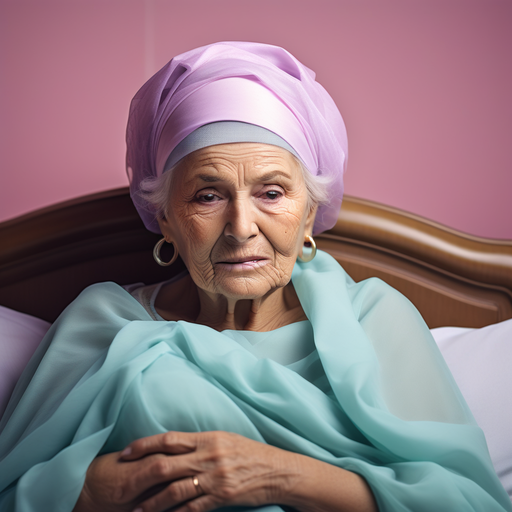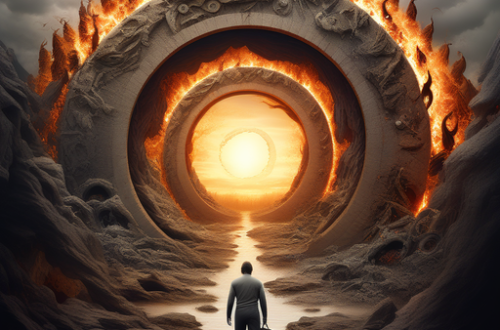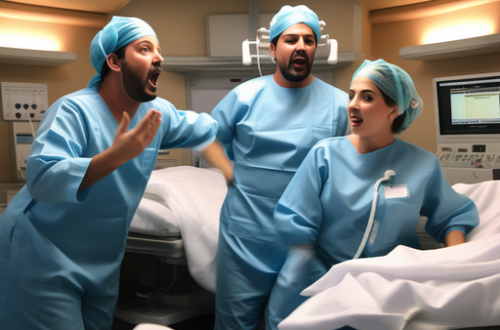In a not so far distant hazy memory, I found myself seated in my clinic, eagerly awaiting patients willing to entrust me with their well-being. Fueled by my passion for pain medicine, I had chosen to venture the third time, beyond the comfort of the operating room where I served as an anesthesiologist in a pain clinic. As I pondered the uncertainty of my decision, the abrupt arrival of an ambulance diverted my attention.
Not Just another day
A middle-aged woman, clad in traditional Indian attire, entered my chamber with the support of her disheveled son. Distressed and breathless, she struggled to reach my clinic, raising questions about the urgency of her condition. An uneasy feeling settled within me, I questioned the hospital’s choice to send the patient to my clinic rather than ask for a bedside visit.
I rose from my chair as a sense of responsibility to assist her to find the chair. The woman was afflicted by advanced ovarian cancer and this had not only been ravaged by the disease in her ovaries but also spread to her vital organs—liver and lungs—and, most critically, in her spine, causing excruciating pain in the back.
In our local dialect, she expressed, “Sir, the pain not only torments my back but slithers down my leg like an electric serpent. It’s constant, paralyzing. I can’t bear it.”
Why me?
Witnessing her agony which was also reflected on a pain scale reading of 10/10, I delved into her medical history, exploring all avenues to understand her pain. After an unusually extended thirty minutes of history taking, I inquired about the medications prescribed for her pain.
Her son interjected, “The doctors haven’t given up on her, but we’ve given up on the pain. She’s tried every medication, including the highest dose of morphine, yet relief lasts no more than ten minutes. Sleep has become a distant memory for our family. Please, do something.”
Despite being on a regimen of potent remedies, from painkillers to nerve agents, the relentless pain persisted. Even steroids offered no respite. Frustration set in as I questioned why medical science struggled to find more effective solutions for cancer pain.
Summoning a mix of empathy and realism, I met the patient’s expectant gaze, admitting, “There’s not much more I can do. All available pain-relieving options have been exhausted.”
She replied “There must be something doctor which you could do relieve this pain.”
Just another option
Neuroablation is possible here where a rather toxic drug like alcohol or phenol is injected directly to destroy the nerves. However it involves considerable risk of her loosing the power of her limbs and the power to void urine. I was of the belief that its reserved for the worst scenarios. I was planning to reshuffle some of those pain relieving medications to buy time but I was wrong.
Desperation filled the room when I mentioned them about this neuroablative procedure. The patient and her son fell to my feet, pleading,
“Please do something for the pain. We wish for this pain to go away.” The mother, subdued, added, “Please, if necessary, end my life, but let the pain cease. I am ready to die to be pain-free.”
Reflections
The subsequent events in the patient’s journey are another chapter in my story. This encounter prompted reflection on two profound truths:
- While preventing deaths may be beyond our control, alleviating pain remains always a possibility.
- I am resolved to persist in my efforts to treat pain. I may be the last resort for some patient.





Can you be more specific about the content of your article? After reading it, I still have some doubts. Hope you can help me.
Your article helped me a lot, is there any more related content? Thanks!
Your article helped me a lot, is there any more related content? Thanks!
Wonderful beat I wish to apprentice while you amend your web site how could i subscribe for a blog web site The account aided me a acceptable deal I had been a little bit acquainted of this your broadcast provided bright clear idea
buy priligy pakistan This has been reported in the recent European Respiratory Society American Thoracic Society consensus guideline providing clinical recommendations for the treatment of AECOPD 10
I have read some just right stuff here. Definitely value bookmarking for revisiting. I surprise how a lot attempt you set to make this sort of fantastic informative site.